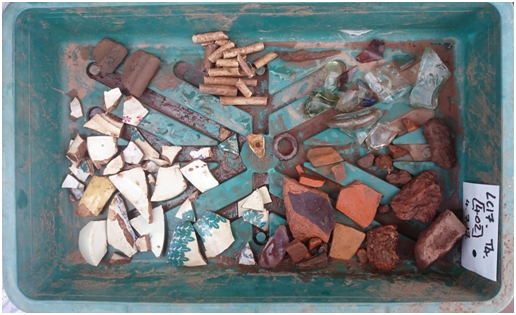Prehistoric and Roman
Worked flint
Flint was being brought into Longtown from elsewhere to make these blades (see History/Prehistoric for details).
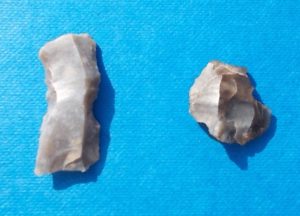
Roman Pottery
Several pieces of Roman Severn Valley Ware were found, including this piece from a ring- necked flagon.
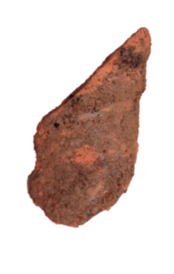
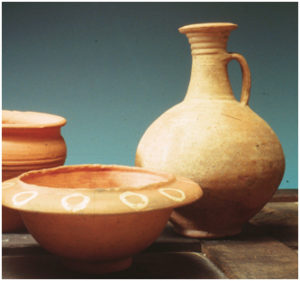
A piece of amphora, type Dressel 20, used to ship olive oil from southern Spain.
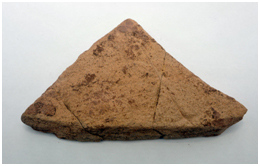
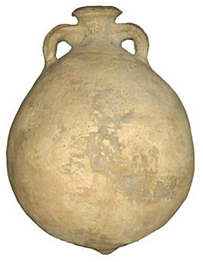
29 pieces of Roman pottery were found at Longtown Castle Green, all of it dating to the first century AD.

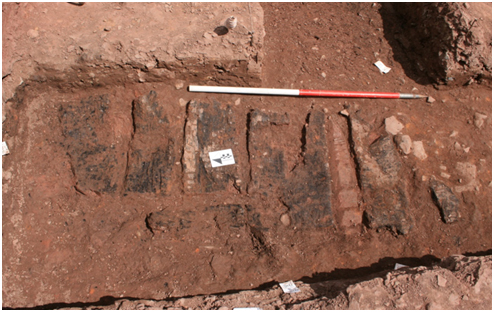
Medieval Finds
Pottery
Most of the pottery found was sherds of basic undecorated black cooking pots like these made in Worcester and Malvern.

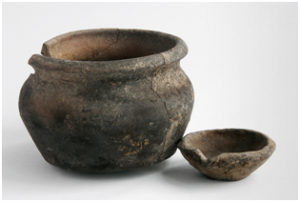
There were a few pieces from fine decorated green-glazed tableware, which must have come from the castle.
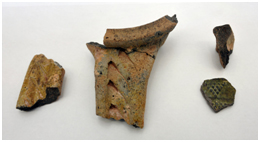
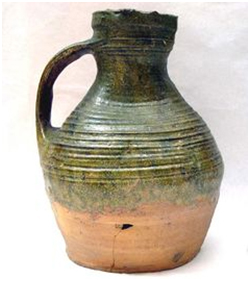
Horseshoe & nails

Horseshoe nails were one of the most common finds. We also found a complete 13th century horseshoe along with charcoal and metalworking slag from a blacksmith’s forge.
Can you spot the horseshoe? Look for the brown rust traces.
A Whetstone
This small whetstone was used for sharpening knives. It was pierced so that it could be worn on a thong around the neck. It had previously snapped across the original hole so a second hole had been bored.
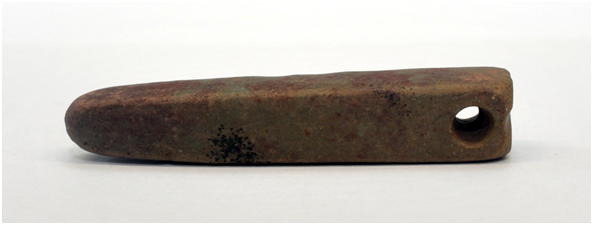
A grooved stone, purpose unknown.
The grooves, around 5mm across, are rounded and therefore were not used for sharpening a blade. The surface of the stone is covered with a spattering of tiny hemispheres of iron from some metalworking process.
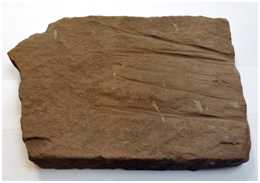
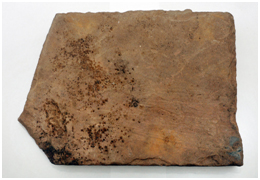
A spindle whorl.
This is a turned stone flywheel fitted to a spindle used for spinning wool into yarn.
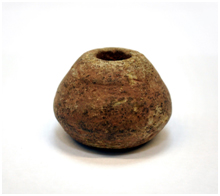
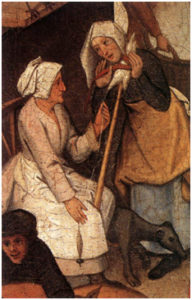
In the Middle Ages spinning was a common occupation for most women. This has given us the word “spinster” for an unmarried woman and the expression “distaff side” for the female members of a family. The distaff was a rod, which held a bundle of wool. A thread from this was pulled out and spun using a weighted spindle, shown here by the seated woman’s leg. A long spun-out story, whose thread is difficult to follow, is called a yarn.
A glass gaming piece
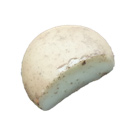
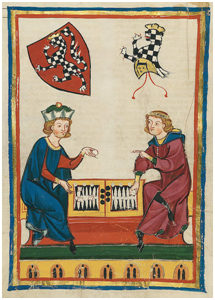
Both backgammon and checkers or draughts were played during the medieval period.
Casket mounts
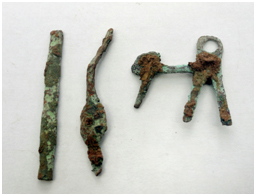
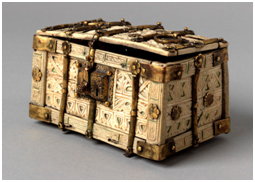
These odd pieces of copper alloy were probably used to strengthen and decorate a casket, used to store valuables.
Millstone
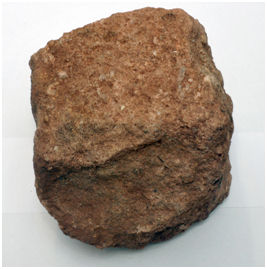
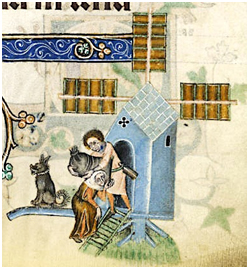
A piece from a broken millstone. This quartz conglomerate, known as puddingstone, is quarried from the Wye Valley near Monmouth. The nearest watermill is about half a mile from Castle Green. so possibly this stone came from a windmill. Windmills were common by the 13th century and it is recorded that there was one at the de Lacy’s stronghold at Weobley.
Post-medieval Finds
Arrowheads
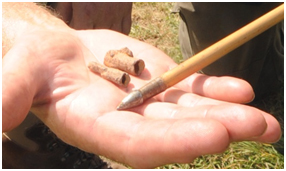

Two heavily corroded arrowheads were found just below the turf. They are not heavy enough for medieval war arrows, so were probably for target shooting or hunting during the early post-medieval period.
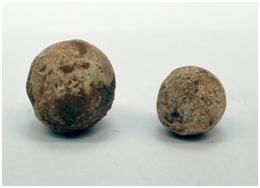
Lead shot
A musket ball and a pistol ball, possibly from the time of the Civil War. There is no record of Civil War action at Longtown but Hereford Museum has a cannonball found at the castle.
19th century litter
Immediately below the grass there was a scattering of 19th century pottery, clay pipe stems and bottle glass, and a number of slate pencils lost by pupils from the old school.
